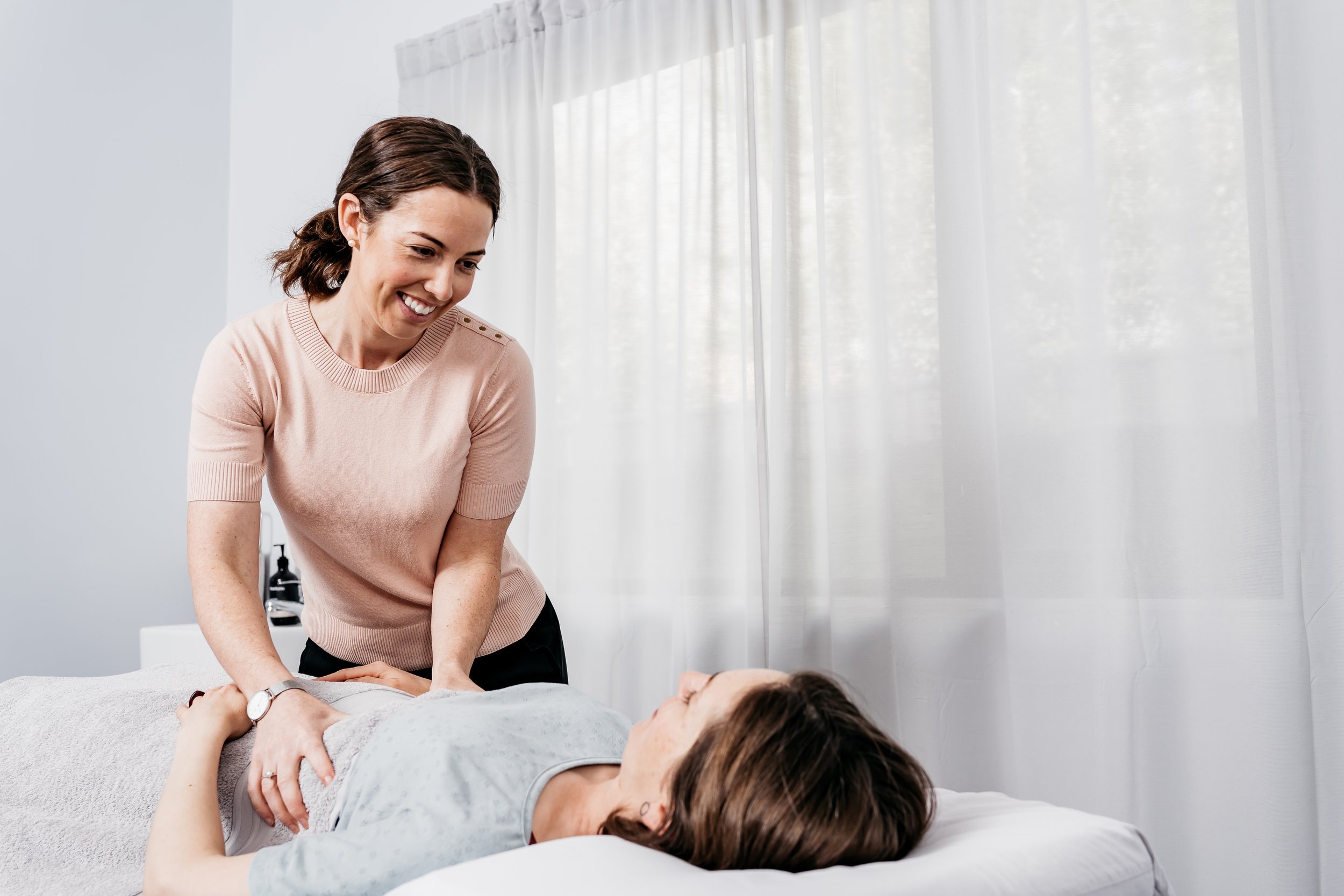Pelvic Organ Prolapse (POP) - what you need to know without freaking out
If you’ve ever googled the term “prolapse”, then you’ll know that it can be a deep, dark spiral - generally at 3am when you’re not thinking clearly. The stress, anxiety and shame around this diagnosis is generally unhelpful for anyone’s mental health or recovery. Read on to learn the basics about POP and, rather than googling, please book in with one of our pelvic health osteopaths or physiotherapists to make an individualised plan to address your concerns.
What is pelvic organ prolapse?
The pelvic organs include your bladder, uterus, large bowel and rectum. There are multiple ligaments and fascia (connective tissues) that support your organs and connect them to the bones of the pelvis. The organs are also supported by your pelvic floor muscles, All of these supporting tissues potentially can be torn, stretched or simply weaken over time. Pelvic organ prolapse (POP) is a condition where, due to lack of support, one or multiple pelvic organs move down into the vagina. This can vary from just a little bit to more significant sized prolapse.
Risk Factors:
Several factors can increase the risk of developing postpartum vaginal prolapse. Some of these factors may be variables within your control (straining on the toilet, untreated chronic coughs, obesity); others are completely outside of your control (genetics, ageing, connective tissue disorders); and others may technically be variable but come with many complexities and confounding factors (vaginal births, a large baby or long second stage of labour). Depending on where you are in your life stage, some of these risk factors may be helpful to discuss further with your clinician.
What are the symptoms of POP?
The symptoms of postpartum vaginal prolapse can vary depending on the severity of the condition. Many women in fact have POP but have no symptoms for many years. A common pattern is that you may feel best in the mornings after a period of horizontal rest and worse at the end of the day. Some of the most common symptoms include:
A feeling of pressure or fullness in the vagina or pelvis
A sensation of something bulging or protruding from the vagina
Difficulty emptying the bladder or bowel
Painful intercourse or decreased sensation
Lower back pain
Treatment Options:
There are several treatment options available for postpartum vaginal prolapse. The best treatment for you will depend on the severity of your condition, your age, and your overall health. Some treatment options include:
Pelvic floor exercises: These exercises can help strengthen the muscles in the pelvic area, which can help reduce the symptoms of postpartum vaginal prolapse depending on the severity.
Pessary: A pessary is a device that is inserted into the vagina to help support the pelvic organs. It is often used as a non-surgical treatment option for women with mild to moderate prolapse.
Surgery: In more severe cases of postpartum vaginal prolapse, surgery may be necessary. There are several different surgical procedures that can be performed, including hysterectomy, sacrocolpopexy, and anterior or posterior repair.
Lifestyle changes: Making certain lifestyle changes can also help reduce the symptoms of postpartum vaginal prolapse. These include maintaining a healthy weight, improving your diet to decrease constipation, and quitting smoking.
Whole person approach: A whole person approach to treating postpartum vaginal prolapse involves a combination of diet, exercise, and lifestyle changes. This approach aims to improve overall health and strengthen the body as a whole and is something that we are really passionate about. A holistic approach to prolapse might incldue:
Addressing how you manage pressure when lifting, coughing, sneezing and on the toilet.
Looking at your breathing mechanics and how your abdominal muscles, ribs and diaphragm work together.
Treating any other injuries or pain that might be impacting how you move and lift.
Looking at how your body absorbs load, in particular if you enjoy running or other high impact activities. Ensuring that your foot, ankle, knee and hip are all strong and able to absorb force well to decrease the load through your pelvic floor.
Strengthening your whole body - having strong arms, legs and core muscles all mean that when you lift or move, the load is spread through your body.
Addressing and muscular tension including pelvic floor tension. Sometimes POP leads to lots of little muscles working extra hard. Releasing tension gives some women symptomatic relief. Releasing tension might be in the form of a home stretching program, modified yoga class or hands on treatment (this might include internal pelvic floor release or techniques to release the muscles and joints around your pelvis and body)
Addressing any stress or anxiety that may be contributing to how you hold tension in your body.
…and so much more! Your assessment, treatment and advice will always be tailored to your unique circumstances and your body.
In summary:
POP is a common condition that can cause stress, discomfort, altered pelvic function and pain for women. Fortunately, there are several treatment options available that can help reduce the symptoms and improve quality of life. If you are experiencing symptoms of POP, talk to your healthcare provider about your treatment options. To book a Pelvic Health Initial Assessment with our pelvic health osteos or physios, click here
if you’d like to take a deeper dive into understanding POP, here’s a great resource from the Empowered Motherhood Program. We also have a discount code to their exercise programs so be sure to mention this to your clinician at your next appointment.


